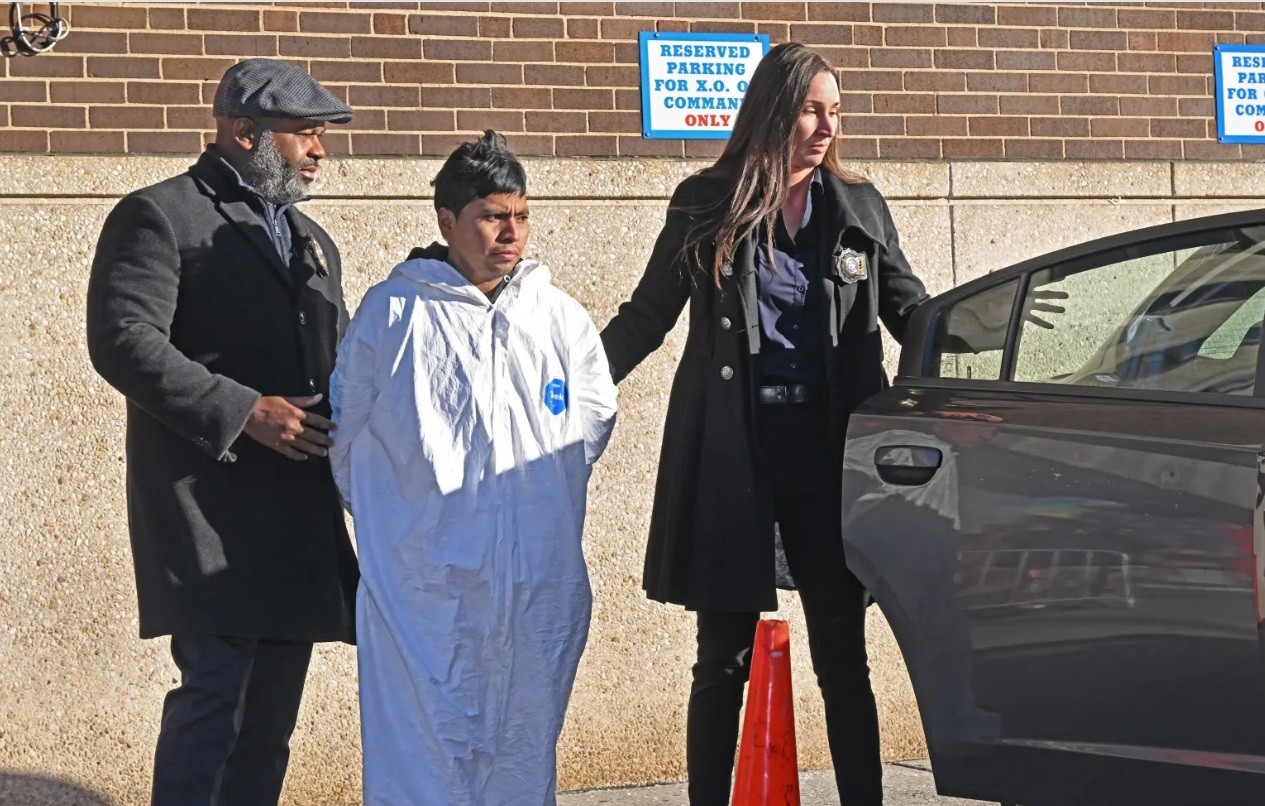Watching 'Woman Burned Alive' on Subway: Humanity's Frozen Heart in Modern New York
 |
| Watching 'Woman Burned' Without Helping |
Sixty years after the infamous Kitty Genovese case, where a young woman was brutally murdered while her neighbors reportedly failed to act, the parallels between the two events are impossible to ignore. However, the recent subway tragedy suggests an even deeper erosion of empathy, driven by societal and cultural shifts. Far from learning from past failures, the cold indifference of 1964 has hardened further into what feels like a collective apathy, even in the face of life-and-death situations.
This incident raises painful questions about humanity, responsibility, and the society we live in today. Why do people hesitate to act? What forces drive this chilling indifference? And how has the social fabric frayed so drastically that compassion has become the exception rather than the norm?
Fear, Responsibility, and the Self-Preservation Instinct
A major reason for inaction in emergencies is fear—fear of personal harm, fear of getting involved, and fear of bearing responsibility. In the subway tragedy, it is easy to imagine that some bystanders froze, unsure of how to help without risking their own safety. Others may have felt inadequate to deal with such a dire situation, fearing that their intervention could worsen the victim’s condition.
Yet, this explanation only goes so far. The act of taking out a phone to record the event indicates a level of detachment that goes beyond simple self-preservation. Recording implies that the situation was perceived as something to be documented rather than resolved, as though the act of capturing the moment absolves the bystander of moral responsibility. This raises troubling questions about how modern technology, combined with a culture of viral content, has turned real-life tragedies into passive spectacles.
An alleged NYPD officer walks right past the woman burning alive on the subway:
The Role of Technology in Dehumanizing Tragedy
The ubiquity of smartphones has transformed the way we perceive and respond to emergencies. In the subway tragedy, many onlookers chose to record the incident rather than assist the victim. The lens of the camera becomes a psychological barrier, distancing the individual from the immediacy of the event. Filming becomes a way to "participate" without truly engaging, as though bearing witness through a screen is enough to fulfill one’s moral duty.
Social media also plays a role in this phenomenon. The quest for likes, shares, and online recognition often overrides basic human empathy. Bystanders may feel that capturing and sharing the moment is somehow contributing to the narrative, but in reality, it only amplifies the horror of indifference. The question then becomes: Has technology eroded our capacity for direct, compassionate action? Or has it merely exposed the apathy that has always existed within us?
Societal Apathy: A Product of Systemic Failures?
Indifference does not exist in a vacuum; it is often a reflection of broader societal issues. In New York City—a metropolis known for its relentless pace, economic inequality, and individualism—the subway tragedy lays bare some of the city’s most painful contradictions.
-
A Culture of Individualism
The United States, and New York City in particular, often glorifies self-reliance and personal success. In this environment, collective responsibility can feel like an afterthought. The "me first" mindset discourages people from stepping out of their routines or risking personal inconvenience for the sake of others. The subway tragedy is a grim reminder of what happens when individualism becomes isolationism.
-
Distrust in Institutions
Many New Yorkers have grown disillusioned with the systems meant to protect them. Whether it’s the police, healthcare, or social services, years of bureaucratic failures and inequality have fostered a deep sense of cynicism. This mistrust may lead people to believe that intervening in emergencies is not their role or that it is futile because the system will ultimately fail the victim anyway.
-
Desensitization to Violence
In a city where crime, homelessness, and mental health crises are daily realities, people often become numb to suffering. The subway tragedy is not the first time New Yorkers have witnessed violence in public spaces, and this overexposure can dull their sense of urgency. When tragedy becomes routine, compassion can feel like an impossible burden.
 |
| An unidentified police officer appears to walk by without rendering aid |
A Cold Society: The Moral Cost of Indifference
The inaction of bystanders in this tragedy reflects not just individual failures but a collective moral crisis. The "frozen heart" of humanity is not merely a metaphor; it represents a societal shift away from community and toward self-preservation at all costs. This shift is particularly evident in urban environments like New York City, where anonymity and isolation often overshadow solidarity and connection.
The cost of this indifference is profound. For the victim, it meant a painful and preventable death. For society, it means the erosion of trust and a weakening of the social fabric. When people feel that they cannot rely on one another in moments of crisis, the bonds that hold communities together begin to fray.
Beyond New York: A National Problem
While the subway tragedy and Kitty Genovese’s murder are uniquely tied to New York City, the issues they highlight extend across the United States. American society, with its emphasis on individualism, often struggles to balance personal freedom with collective responsibility. The result is a culture where acts of kindness and courage are celebrated precisely because they are so rare.
Moreover, systemic inequalities—such as inadequate mental health care, economic disparities, and underfunded public services—compound the problem. When people feel overwhelmed by their own struggles, they are less likely to extend empathy to others. This creates a vicious cycle of apathy and disengagement that is difficult to break.
Finding a Way Forward: Rebuilding Compassion
The subway tragedy forces us to confront uncomfortable truths about ourselves and our society. But it also offers an opportunity to reflect and change. To combat this culture of indifference, both systemic and individual efforts are necessary:
-
Education and Empowerment
Teaching people basic crisis-response skills, such as first aid and fire safety, can help eliminate the fear of "not knowing what to do" in emergencies. Public awareness campaigns can also emphasize the importance of stepping in to help, even in small ways.
-
Community Building
Rebuilding a sense of community in urban areas is essential. Initiatives that foster connections among neighbors and promote shared responsibility can help counteract the isolation that breeds apathy.
-
Cultural Shifts
Encouraging a culture of empathy and compassion requires collective effort. From media representation to workplace policies, society must prioritize human connection over self-interest.
-
Systemic Reforms
Addressing the root causes of societal apathy—such as economic inequality and distrust in institutions—is crucial. Strengthening public services and creating safety nets can alleviate some of the pressures that make people retreat into themselves.
Conclusion
The recent subway tragedy and the indifference it revealed are not isolated incidents but symptoms of a deeper societal illness. Sixty years after Kitty Genovese’s murder, it is clear that the frozen heart of humanity has not thawed—in fact, it may have grown colder. Whether driven by fear, self-interest, or a culture that prioritizes individualism over community, the inaction of bystanders reflects a failure of both individuals and the systems that shape them.
Rebuilding compassion and empathy is not an easy task, but it is a necessary one. Without it, we risk becoming a society where tragedy is not just witnessed but passively accepted, a society where the question is no longer "How can I help?" but "What’s in it for me?" The time to act, collectively and individually, is now—before the flames of apathy consume us all.
 Who is Sebastian Zapeta, A Guatemalan Migrant in Setting a Woman on Fire Inside NY Subway Who is Sebastian Zapeta, A Guatemalan Migrant in Setting a Woman on Fire Inside NY Subway A Guatemalan immigrant named Sebastian Zapeta was taken into custody on suspicion of setting a sleeping woman on fire inside a Coney Island F train ... |
 NY Governor Kathy Hochul Touted 'Subway Safe' After 'Woman Burned Alive': Fact-Check NY Governor Kathy Hochul Touted 'Subway Safe' After 'Woman Burned Alive': Fact-Check Within hours of a migrant allegedly setting a woman on fire, New York Governor Kathy Hochul received a lot of backlash for promoting her efforts ... |
 Fact-Check: An Alleged Cop 'Ignored' Burning Woman, Amelia Carter, on NYC Subway Fact-Check: An Alleged Cop 'Ignored' Burning Woman, Amelia Carter, on NYC Subway Fact-check: Outrage has been triggered by a video that went viral, which shows a woman being set on fire in a New York City subway. ... |
 TDA Gang Members 'Robbing' Passengers on New York Subway - Safety Concerns TDA Gang Members 'Robbing' Passengers on New York Subway - Safety Concerns A video showing alleged Tren De Aragua (TDA) gang members on the New York City subway has gone viral on X. |



























